 I have been quite keen to hear just about everything that this Norwegian saxophonist releases since he damn near stole the show on Caterina Barbieri’s Fantas Variations earlier this year. Thus far, I have yet to be disappointed and this latest solo release beautifully continues Giske's ascendance as one of the most compelling saxophonists on earth. When I first heard Cracks, it reminded me of Pauline Oliveros's hugely influential Deep Listening, as much of it feels like a killer sax solo reverberating around a vast subterranean space leaving dreamlike ghost trails in its wake. As it turns out, that is a masterful illusion, as Giske got to the same place in a very different way (and with very different conceptual inspirations). One of those inspirations was José Esteban Muñoz’s Cruising Utopia, which suggests that "queerness must strive towards futurity." A healthy portion of Cracks' futurity was provided by producer/collaborator André Bratten, as the album was recorded in "the new 'resonant' space of Bratten's reactive studio tuned to his original sounds." The album's description further notes that Cracks brings Giske "one step closer to the man-machine," but the beauty of the album for me lies in how effectively he combines intimate intensity with hypnotically repeating patterns.
I have been quite keen to hear just about everything that this Norwegian saxophonist releases since he damn near stole the show on Caterina Barbieri’s Fantas Variations earlier this year. Thus far, I have yet to be disappointed and this latest solo release beautifully continues Giske's ascendance as one of the most compelling saxophonists on earth. When I first heard Cracks, it reminded me of Pauline Oliveros's hugely influential Deep Listening, as much of it feels like a killer sax solo reverberating around a vast subterranean space leaving dreamlike ghost trails in its wake. As it turns out, that is a masterful illusion, as Giske got to the same place in a very different way (and with very different conceptual inspirations). One of those inspirations was José Esteban Muñoz’s Cruising Utopia, which suggests that "queerness must strive towards futurity." A healthy portion of Cracks' futurity was provided by producer/collaborator André Bratten, as the album was recorded in "the new 'resonant' space of Bratten's reactive studio tuned to his original sounds." The album's description further notes that Cracks brings Giske "one step closer to the man-machine," but the beauty of the album for me lies in how effectively he combines intimate intensity with hypnotically repeating patterns.
The opening "Flutter" is aptly named, as it begins with a breathy, fluttering pattern hovering at the edge of audibility. Gradually, a warbling and tender melody takes shape and the piece blossoms into something wonderfully broken and beautiful. "Flutter" is one of the most simmering and understated pieces on the album, as the central pattern feels like little more than breath and flapping keys, but most of the remaining pieces share a very similar structure. "Cruising" soon solidifies what that structure is: Giske unleashes winding, serpentine arpeggios akin to Phillip Glass-style minimalism, but with a twist: those arpeggios almost always spiral outward into something strangled, howling, or tenderly poignant (and sometimes all within the same piece). Bratten's hand plays a crucial role on "Cruising" as well, as the visceral intensity and gnarled textures that Giske wrests from his sax cut through a hallucinatory fog of long, lingering decays. It is quite an effective balance of sharp and soft textures, as the snarling central melodies stand out in stark relief while a deepening spell of unreality slowly intensifies in the background. The title piece is the sole divergence from that aesthetic, as the ghostly fog takes over completely for a long interlude of murky, billowing ambiance. The strongest piece on the album is "Void," which follows the expected arc of repeating arpeggios splintering into howls of anguish, but represents that arc in its most perfect form. Or maybe I just like the central melody more than usual. In either case, "Void" hits quite an effective balance of animal intensity, poignance, and flickering psychedelia. The closing "Matter (part 3)" is yet another strong variation on the album's "unraveling patterns" aesthetic, but it packs more of a throbbing, seething tension than the rest of the album. While I have not yet fully warmed to the title piece, Cracks is otherwise nothing but wall-to-wall greatness. I love the seemingly raw, intimate simplicity of these pieces, as Giske is an absolute genius at transforming a few arpeggios into something howling, unpredictable, and vibrantly alive.
Samples can be found here.


 This latest release from my favorite Swedish free music collective is apparently "a concept album on relationships, family values and broken promises." I will have to take their word on that, as I do not understand Swedish, but Ömhet & Skilsmässa ("Tenderness & Divorce") does have a very different (and possibly more wholesome) feel than some previous releases. How truly wholesome an album can be when it features Sewer Elections' Dan Johansson is up for debate, but I do not doubt the collective's commitment to carrying on the grand tradition of freeform Swedish psychedelia a la Pärson Sound, Träd Gräs Och Stenar, and others. That said, Enhet För Fri Musik have their own wonderful thing going and I would be hard pressed to think of any other artists this devoted to guileless simplicity and organic spontaneousness. Admittedly, I was secretly hoping the quintet would revisit the sound collage territory of "Fragment Av En Midsommarnattsdröm" this time around, but my consolation prize is that the Jandek-ian discordant acoustic guitars are kept to a minimum. Instead, this album feels like the impressionistic audio diary of a teenage girl who is growing up in a pleasant rural commune, as it uncannily evokes the wonder and openness of someone totally indifferent to popular trends and not yet hardened by the endless disappointment and inhumanity of the outside world.
This latest release from my favorite Swedish free music collective is apparently "a concept album on relationships, family values and broken promises." I will have to take their word on that, as I do not understand Swedish, but Ömhet & Skilsmässa ("Tenderness & Divorce") does have a very different (and possibly more wholesome) feel than some previous releases. How truly wholesome an album can be when it features Sewer Elections' Dan Johansson is up for debate, but I do not doubt the collective's commitment to carrying on the grand tradition of freeform Swedish psychedelia a la Pärson Sound, Träd Gräs Och Stenar, and others. That said, Enhet För Fri Musik have their own wonderful thing going and I would be hard pressed to think of any other artists this devoted to guileless simplicity and organic spontaneousness. Admittedly, I was secretly hoping the quintet would revisit the sound collage territory of "Fragment Av En Midsommarnattsdröm" this time around, but my consolation prize is that the Jandek-ian discordant acoustic guitars are kept to a minimum. Instead, this album feels like the impressionistic audio diary of a teenage girl who is growing up in a pleasant rural commune, as it uncannily evokes the wonder and openness of someone totally indifferent to popular trends and not yet hardened by the endless disappointment and inhumanity of the outside world.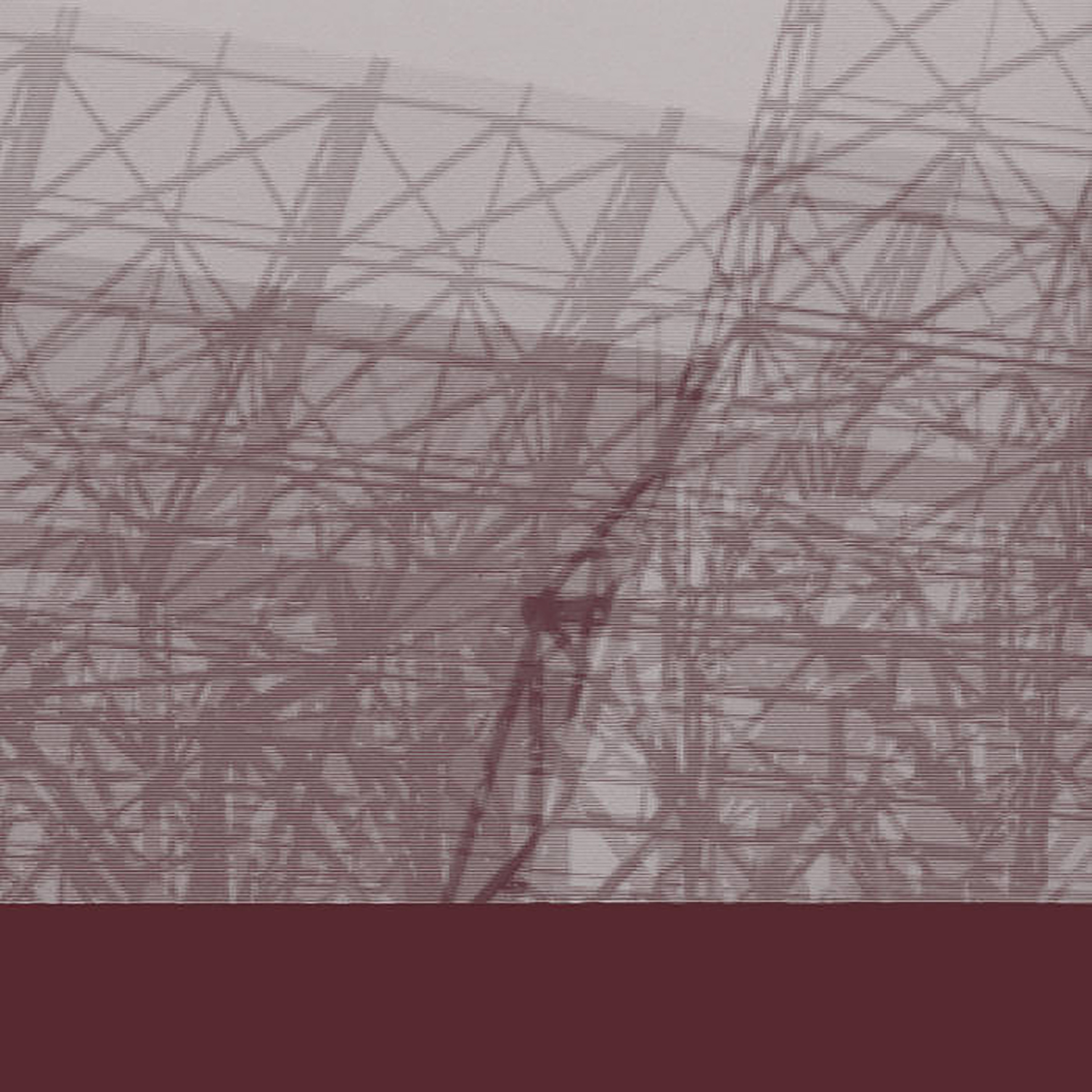 This latest release from Robin Rimbaud is hopefully the first of many deep dives into the Scanner archives, as he ambitiously spent part of his lockdown digitizing and mixing his unreleased work from the '80s. The big story, of course, is that Earthbound Transmissions features some of Rimbaud's early work with appropriated phone conversations that predates Scanner's 1993 eponymous debut. Those scanned calls are only one facet of these recordings, however, as this album documents a formative experimental stage immediately after Rimbaud's acquisition of a "luxuriously expensive" Fostex 280 four-track recorder, which he combined with a Digitech RDS 7.6 Time Machine to make looping, layered sound collages. For the most part, Earthbound Transmission feels like an unusually strong release from the '80s DIY noise cassette scene (albeit more on the "murky ambient" side of the spectrum), but there are also a handful of pieces that legitimately feel like lost Scanner classics.
This latest release from Robin Rimbaud is hopefully the first of many deep dives into the Scanner archives, as he ambitiously spent part of his lockdown digitizing and mixing his unreleased work from the '80s. The big story, of course, is that Earthbound Transmissions features some of Rimbaud's early work with appropriated phone conversations that predates Scanner's 1993 eponymous debut. Those scanned calls are only one facet of these recordings, however, as this album documents a formative experimental stage immediately after Rimbaud's acquisition of a "luxuriously expensive" Fostex 280 four-track recorder, which he combined with a Digitech RDS 7.6 Time Machine to make looping, layered sound collages. For the most part, Earthbound Transmission feels like an unusually strong release from the '80s DIY noise cassette scene (albeit more on the "murky ambient" side of the spectrum), but there are also a handful of pieces that legitimately feel like lost Scanner classics. Back in 2009, Duane Pitre curated a CD entitled The Harmonic Series that brought together an array of artists like Pauline Oliveros and Ellen Fullman for a collection of pieces composed for Just Intonation. Roughly a decade later, Pitre has returned with a considerably more ambitious second volume that enlists "six of the most important emerging voices of contemporary experimental music" for a triple LP extravaganza of longform Just Intonation pieces. To his credit, Pitre truly did assemble an impressive lineup for this release, as artists like Caterina Barbieri and Kali Malone are undeniably leading lights of the current vanguard. In fact, everybody here has a history of making great or provocative music, though I am not sure everyone was brimming with great ideas for a bombshell Just Intonation opus, as it seems like a daunting challenge for anyone attempting melodies. Given that, The Harmonic Series II is more of a fascinating mixed bag than a uniform triumph, though roughly half the artists managed to conjure up something that exceeded my expectations. And regardless of how well some pieces do or do not work, this collection has definitely expanded my idea of what is possible with Just Intonation.
Back in 2009, Duane Pitre curated a CD entitled The Harmonic Series that brought together an array of artists like Pauline Oliveros and Ellen Fullman for a collection of pieces composed for Just Intonation. Roughly a decade later, Pitre has returned with a considerably more ambitious second volume that enlists "six of the most important emerging voices of contemporary experimental music" for a triple LP extravaganza of longform Just Intonation pieces. To his credit, Pitre truly did assemble an impressive lineup for this release, as artists like Caterina Barbieri and Kali Malone are undeniably leading lights of the current vanguard. In fact, everybody here has a history of making great or provocative music, though I am not sure everyone was brimming with great ideas for a bombshell Just Intonation opus, as it seems like a daunting challenge for anyone attempting melodies. Given that, The Harmonic Series II is more of a fascinating mixed bag than a uniform triumph, though roughly half the artists managed to conjure up something that exceeded my expectations. And regardless of how well some pieces do or do not work, this collection has definitely expanded my idea of what is possible with Just Intonation.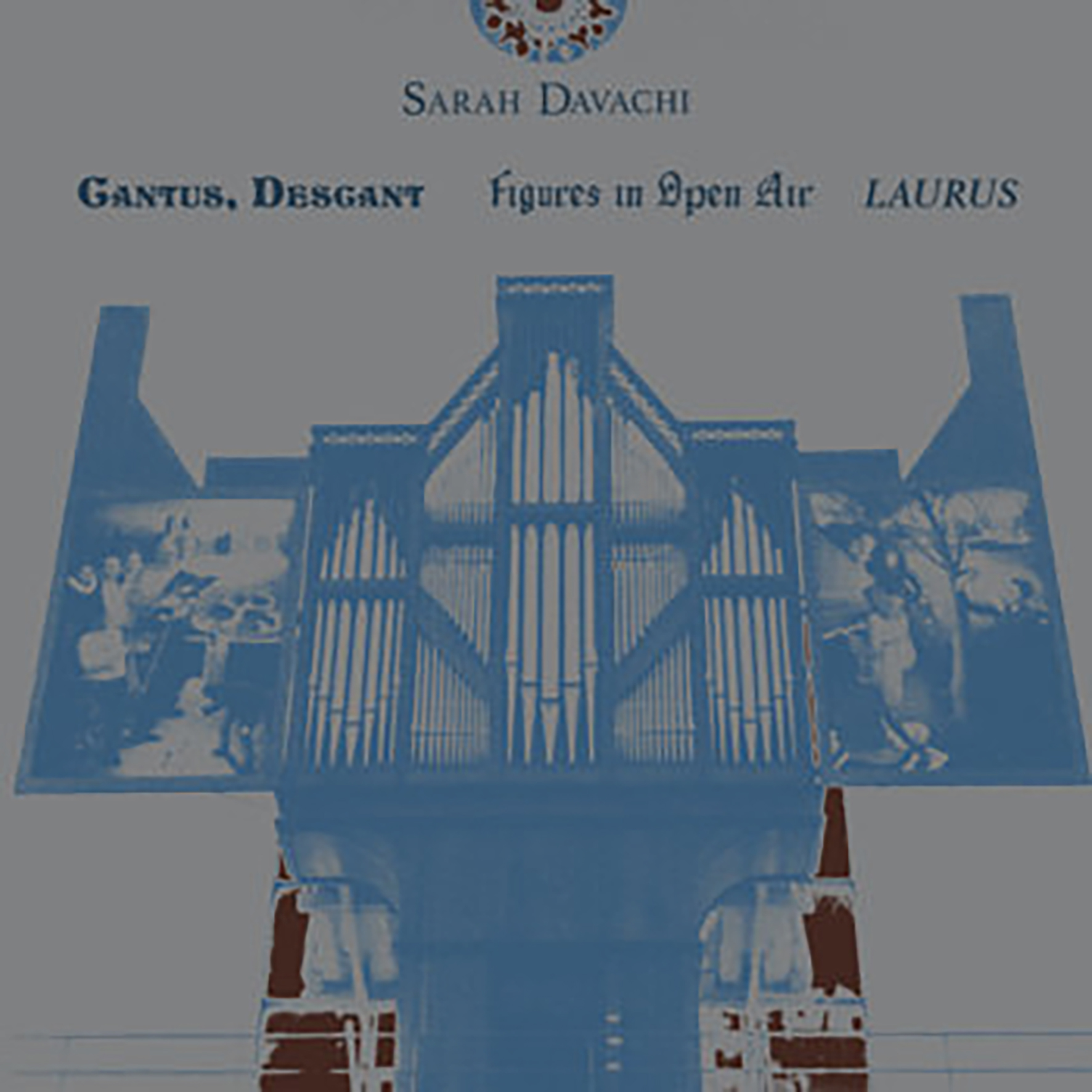 This five-CD boxed set ambitiously compiles all three of Davachi's interrelated 2020 albums released on her own Late Music imprint. Given that Figures in Open Air alone features two pieces that clock in around an hour each, this collection presents an absolutely overwhelming amount of similar-sounding material. That said, Cantus, Descant seems to be one of Davachi's more beloved releases among fans despite its unswerving devotion to pipe organ-centered minimalism. That makes this collection an inspired idea, as it presents that constrained vision in three differing stages: its "more raw and improvisational" beginnings (Laurus), the polished and meticulously crafted studio album, and some great live performances from the period when this era was taking shape. Each of the three albums features some sublime highlights, which will likely inspire me to curate my own condensed version. That distillation will give me the sustained and focused beauty that I want from a Sarah Davachi album, but Cantus Figures Laurus can also provide a calming five-hour respite in a cathedral of drones. It is not unlike a portable version of La Monte Young's Dream House, if he were into church music instead of psychotropic Just Intonation harmonies. Hell, it can even be an interactive one, as listeners can enhance their experience with their own Marian Zazeela-inspired light shows.
This five-CD boxed set ambitiously compiles all three of Davachi's interrelated 2020 albums released on her own Late Music imprint. Given that Figures in Open Air alone features two pieces that clock in around an hour each, this collection presents an absolutely overwhelming amount of similar-sounding material. That said, Cantus, Descant seems to be one of Davachi's more beloved releases among fans despite its unswerving devotion to pipe organ-centered minimalism. That makes this collection an inspired idea, as it presents that constrained vision in three differing stages: its "more raw and improvisational" beginnings (Laurus), the polished and meticulously crafted studio album, and some great live performances from the period when this era was taking shape. Each of the three albums features some sublime highlights, which will likely inspire me to curate my own condensed version. That distillation will give me the sustained and focused beauty that I want from a Sarah Davachi album, but Cantus Figures Laurus can also provide a calming five-hour respite in a cathedral of drones. It is not unlike a portable version of La Monte Young's Dream House, if he were into church music instead of psychotropic Just Intonation harmonies. Hell, it can even be an interactive one, as listeners can enhance their experience with their own Marian Zazeela-inspired light shows. Metropolis Records continues their ambitious LPD reissue campaign with an expanded and remastered edition of this oft-fascinating album from the band's celebrated mid-'80s hot streak. According to the band, Island of Jewels was "the natural successor" to The Tower, but it was chronologically sandwiched between two of the Dots' most beloved albums from the era (1985's Asylum and 1988's Any Day Now). Being eclipsed on either side by arguably superior albums has not been optimal for Island of Jewels' stature within the LPD canon, yet it still captured the band in legitimately inspired form (albeit in service of an especially bleak vision this time around). As I did not start delving into the Dots' oeuvre until the mid-'90s (I was lured in by The Tear Garden), I still find it a bit difficult to embrace some of the conspicuously "'80s" elements from this particular phase, as the synth sounds and slap/fretless bass themes have not aged terribly well. Then again, it seems deeply wrong-headed to take issue with the tools that the band used to craft such a playfully surreal and endearing collection of songs, as only a fool would let passing stylistic trends rob them of their sense of wonder. While I would describe Island of Jewels as a more of an acquired taste than some of the surrounding releases, it is a taste worth acquiring, as this album is a delightfully hook-filled and hallucinatory world to immerse oneself in.
Metropolis Records continues their ambitious LPD reissue campaign with an expanded and remastered edition of this oft-fascinating album from the band's celebrated mid-'80s hot streak. According to the band, Island of Jewels was "the natural successor" to The Tower, but it was chronologically sandwiched between two of the Dots' most beloved albums from the era (1985's Asylum and 1988's Any Day Now). Being eclipsed on either side by arguably superior albums has not been optimal for Island of Jewels' stature within the LPD canon, yet it still captured the band in legitimately inspired form (albeit in service of an especially bleak vision this time around). As I did not start delving into the Dots' oeuvre until the mid-'90s (I was lured in by The Tear Garden), I still find it a bit difficult to embrace some of the conspicuously "'80s" elements from this particular phase, as the synth sounds and slap/fretless bass themes have not aged terribly well. Then again, it seems deeply wrong-headed to take issue with the tools that the band used to craft such a playfully surreal and endearing collection of songs, as only a fool would let passing stylistic trends rob them of their sense of wonder. While I would describe Island of Jewels as a more of an acquired taste than some of the surrounding releases, it is a taste worth acquiring, as this album is a delightfully hook-filled and hallucinatory world to immerse oneself in.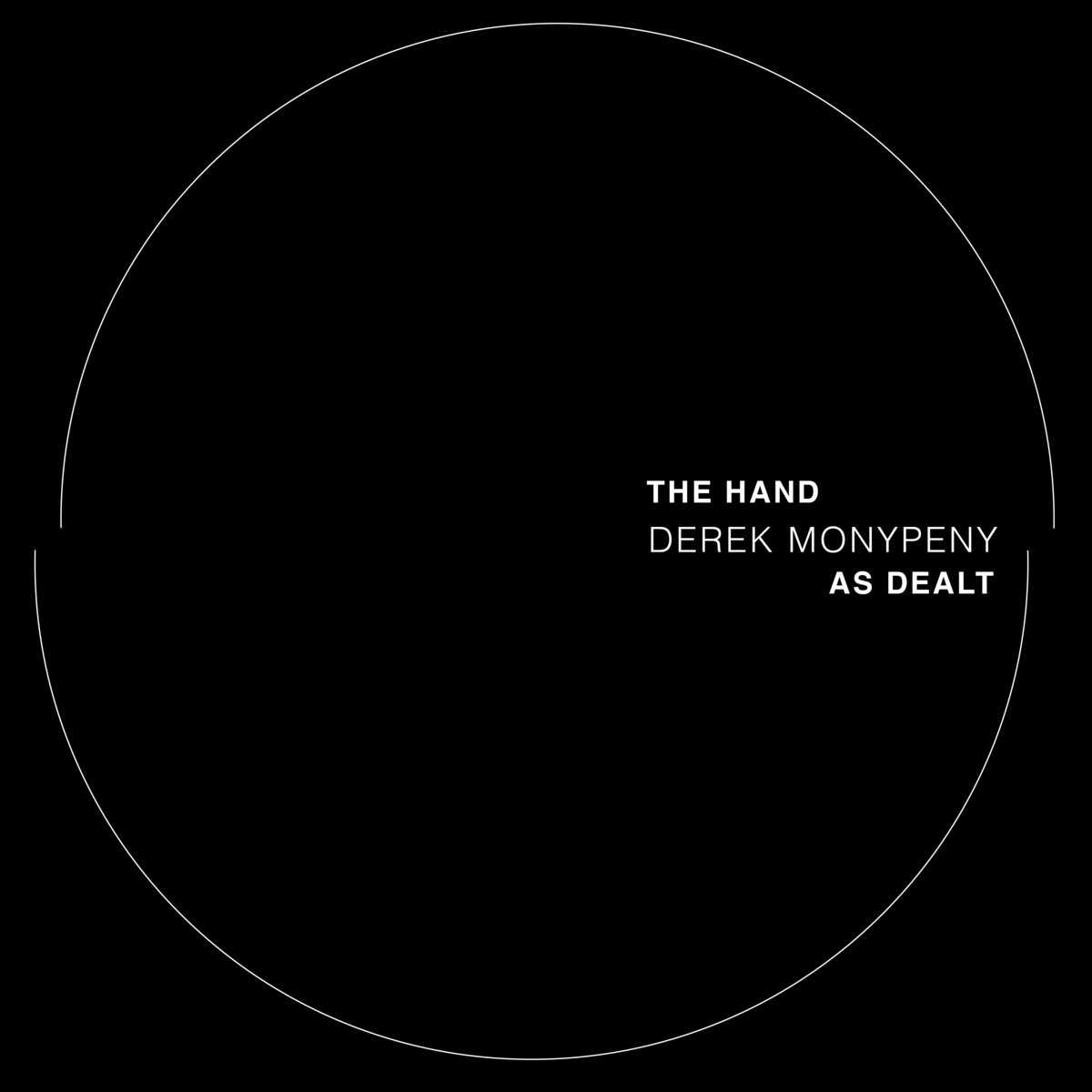 Titled after a phrase in Richard Meltzer's writings to do with an eternal sense of perseverance through sound,The Hand As Dealt is dedicated to Terry Riley, Don Cherry, Alice Coltrane, and Egyptian singer Umm Khoultoum (lesser known in the West, but the incomparable and legendary "Orient Star” and “The Fourth Pyramid” in the East). Inspired by the notion that through profound adversity there is a higher reason to play, inherent in the sound itself, Derek Monypeny plays this hand, simply and brilliantly. With his guitar tuned to DADGAD, and an indian instrument called the shahi baaja tuned somewhere in the region of D major, he also, in terms of equipment and technique, pays mind to a path trod by Riley, Reich, Oliveros, Fripp, and Eno.
Titled after a phrase in Richard Meltzer's writings to do with an eternal sense of perseverance through sound,The Hand As Dealt is dedicated to Terry Riley, Don Cherry, Alice Coltrane, and Egyptian singer Umm Khoultoum (lesser known in the West, but the incomparable and legendary "Orient Star” and “The Fourth Pyramid” in the East). Inspired by the notion that through profound adversity there is a higher reason to play, inherent in the sound itself, Derek Monypeny plays this hand, simply and brilliantly. With his guitar tuned to DADGAD, and an indian instrument called the shahi baaja tuned somewhere in the region of D major, he also, in terms of equipment and technique, pays mind to a path trod by Riley, Reich, Oliveros, Fripp, and Eno.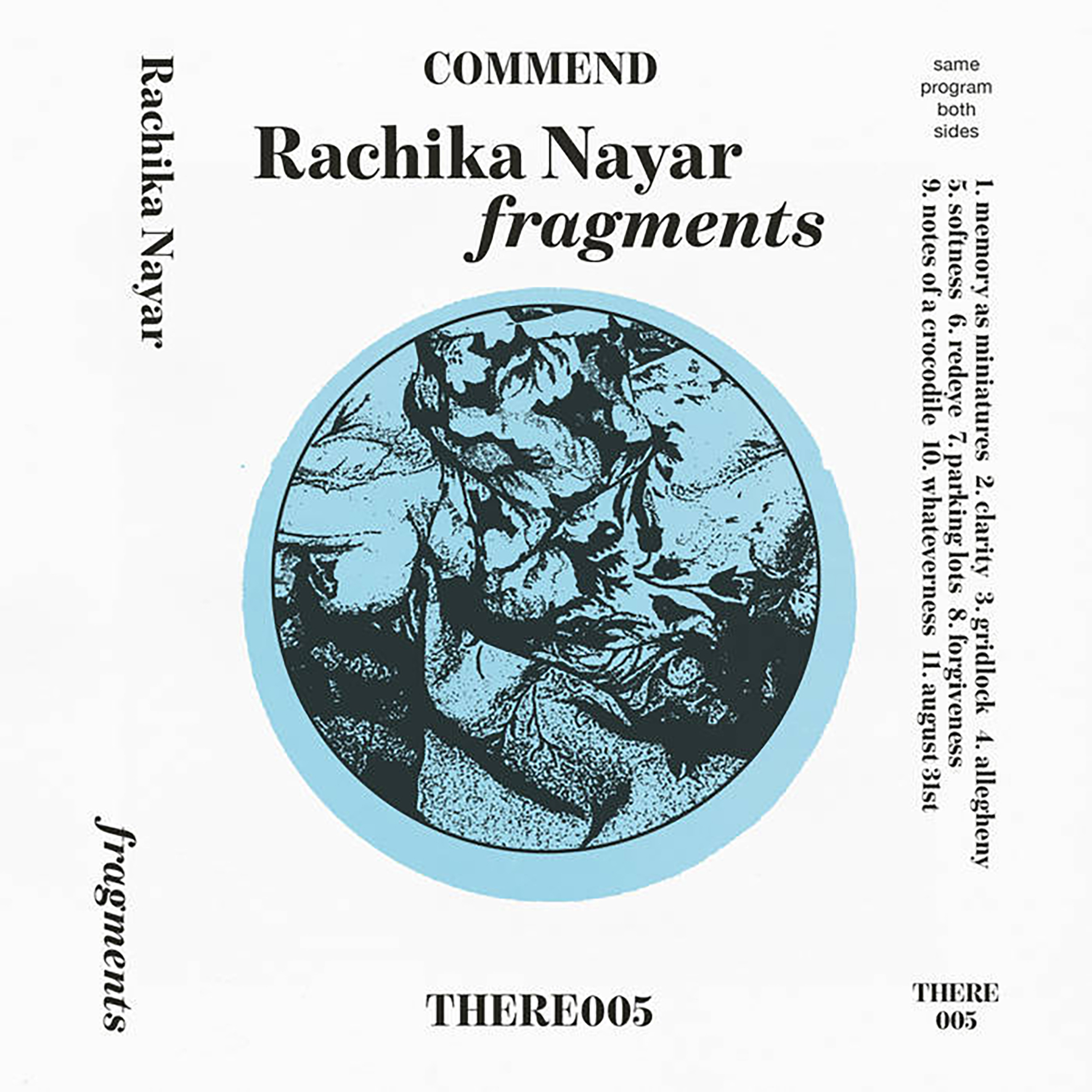 This new EP is something of a sketchbook-like companion piece to Nayar's sublime debut album. More specifically, it is a collection of "sonic miniatures Nayar constructed from guitar loops . . . in the familiar comforts of her own bedroom," as well as a glimpse of what her raw material sounds like before it is processed and reshaped into "grander mutated compositions" like those of Our Hands Against the Dark. In theory, that should make Fragments something of a minor release, but these more simple and intimate pieces are often even better than those of Nayar's more formal work, albeit with the caveat that more than half of these pieces end in under two minutes (and the others do not stick around much longer). Nevertheless, Nayar is an incredibly gifted guitarist with a remarkably strong melodic sensibility and this album is quite a sustained hot streak of great (if ephemeral) ideas. As with her previous album, it is not hard to spot Nayar's influences—in fact, some pieces are even intended as homages to folks like Pat Metheny and Steve Reich. That said, the main touchstones I hear are more hook-minded contemporary artists like Mark McGuire and some classic Midwestern emo. That is always welcome stylistic terrain in my book, but the real beauty of Fragments lies in how often Nayar matches or surpasses her influences at their own games.
This new EP is something of a sketchbook-like companion piece to Nayar's sublime debut album. More specifically, it is a collection of "sonic miniatures Nayar constructed from guitar loops . . . in the familiar comforts of her own bedroom," as well as a glimpse of what her raw material sounds like before it is processed and reshaped into "grander mutated compositions" like those of Our Hands Against the Dark. In theory, that should make Fragments something of a minor release, but these more simple and intimate pieces are often even better than those of Nayar's more formal work, albeit with the caveat that more than half of these pieces end in under two minutes (and the others do not stick around much longer). Nevertheless, Nayar is an incredibly gifted guitarist with a remarkably strong melodic sensibility and this album is quite a sustained hot streak of great (if ephemeral) ideas. As with her previous album, it is not hard to spot Nayar's influences—in fact, some pieces are even intended as homages to folks like Pat Metheny and Steve Reich. That said, the main touchstones I hear are more hook-minded contemporary artists like Mark McGuire and some classic Midwestern emo. That is always welcome stylistic terrain in my book, but the real beauty of Fragments lies in how often Nayar matches or surpasses her influences at their own games. I believe this is the first formal collaboration between these two Sweden-based artists, but the pair have a long history together, as Mannerfelt's label released one of Lewis's early EPs (2014's Msuic). While I was not sure quite what to expect given the breadth of Mannerfelt's oeuvre and Lewis's continuous evolution, I was reasonably certain that this collaboration would be wonderful no matter what shape it took and I was not disappointed. The closest reference point for KLMNOPQ is probably Lewis's killer Ingrid EP, as nearly all of these five songs feature churning, blackened drones or murky, gnarled loops of some kind. The twist, however, is that Mannerfelt and Lewis take that roiling intensity in an unexpectedly playful direction without sacrificing much gravitas. The closing "Full of Piss and Vinegar" captures the duo at the height of their gleefully mischievous loop mangling, as it resembles a nightmarishly chopped-and-screwed mariachi band, yet this entire EP is filled with endearingly inventive and perversely anthemic variations of obsessively looping and psychotropic sound collage.
I believe this is the first formal collaboration between these two Sweden-based artists, but the pair have a long history together, as Mannerfelt's label released one of Lewis's early EPs (2014's Msuic). While I was not sure quite what to expect given the breadth of Mannerfelt's oeuvre and Lewis's continuous evolution, I was reasonably certain that this collaboration would be wonderful no matter what shape it took and I was not disappointed. The closest reference point for KLMNOPQ is probably Lewis's killer Ingrid EP, as nearly all of these five songs feature churning, blackened drones or murky, gnarled loops of some kind. The twist, however, is that Mannerfelt and Lewis take that roiling intensity in an unexpectedly playful direction without sacrificing much gravitas. The closing "Full of Piss and Vinegar" captures the duo at the height of their gleefully mischievous loop mangling, as it resembles a nightmarishly chopped-and-screwed mariachi band, yet this entire EP is filled with endearingly inventive and perversely anthemic variations of obsessively looping and psychotropic sound collage.
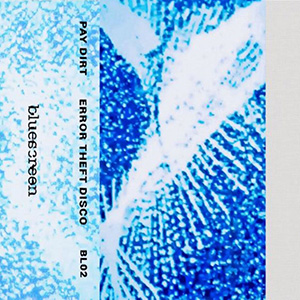 A duo between California artists Victoria Shen and Bryan Day (by way of Nebraska), Error Theft Disco is noise in its purist sense. A disorienting blend of electronics, distortion, and found sounds that never settles down from the first few seconds, the constant flow gives the tape a captivating sense of inertia that functions well in the loud harsh noise vein as well as it does the nuanced, complex sound art one.
A duo between California artists Victoria Shen and Bryan Day (by way of Nebraska), Error Theft Disco is noise in its purist sense. A disorienting blend of electronics, distortion, and found sounds that never settles down from the first few seconds, the constant flow gives the tape a captivating sense of inertia that functions well in the loud harsh noise vein as well as it does the nuanced, complex sound art one.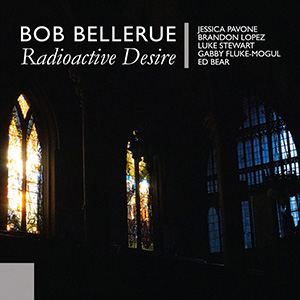 Described as "free chamber music in feedback environments," this massive double CD from New York based artist Bob Bellerue is a perfect blend of structure, improvisation, and chance. Based around rough compositional structures, but left wide open to improvisation, the five instrumentalists, along with Bellerue helming electronics and production, create a massive noise that distinctly reflects the time, place, and conditions in which this material was recorded.
Described as "free chamber music in feedback environments," this massive double CD from New York based artist Bob Bellerue is a perfect blend of structure, improvisation, and chance. Based around rough compositional structures, but left wide open to improvisation, the five instrumentalists, along with Bellerue helming electronics and production, create a massive noise that distinctly reflects the time, place, and conditions in which this material was recorded. In 2010, the Opium Warlords’ MySpace page claimed they sound like "a bad Bolivian Metal band practicing a riff.” Fair enough, but at times their ponderous, doom-laden, brooding, drone-metal shows signs of being more than just another fatberg clogging the sewers of musical culture. My introduction to the group was Live At Colonia Dignidad. Nembutal is a better produced recording, with more variation in speaking, singing, and what sounds like movie dialogue samples. The pest of cliched lyrics such as on “Destroyer of Filth,” is laughable and disappointing, because at other times the words are mysterious and intriguing, sung powerfully and with room to breathe. In those moments, allied with portentous guitar work and a contemplative tempo, Nembutal is nicely out of sync with the flashy haste of modern life.
In 2010, the Opium Warlords’ MySpace page claimed they sound like "a bad Bolivian Metal band practicing a riff.” Fair enough, but at times their ponderous, doom-laden, brooding, drone-metal shows signs of being more than just another fatberg clogging the sewers of musical culture. My introduction to the group was Live At Colonia Dignidad. Nembutal is a better produced recording, with more variation in speaking, singing, and what sounds like movie dialogue samples. The pest of cliched lyrics such as on “Destroyer of Filth,” is laughable and disappointing, because at other times the words are mysterious and intriguing, sung powerfully and with room to breathe. In those moments, allied with portentous guitar work and a contemplative tempo, Nembutal is nicely out of sync with the flashy haste of modern life.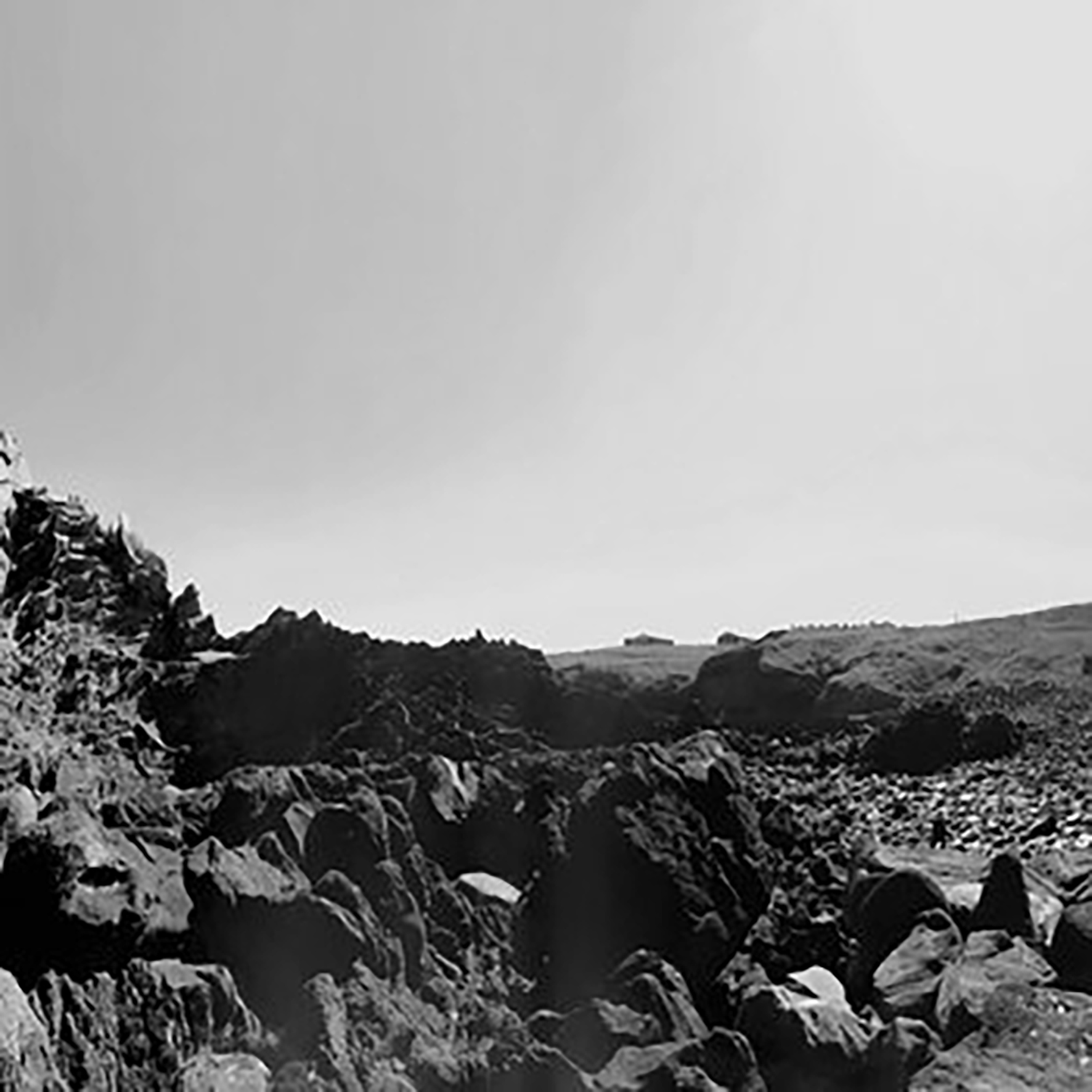 My relationship with Ben Chasny's discography has always been a hit-or-miss one, as some of his albums are very much Not For Me, yet I can think of few other artists who are as intensely committed to endlessly evolving and trying out bold new ideas. This latest release is a prime example of that, as The Veiled Sea can be glibly described as "the album where Ben Chasny unleashes some absolutely face-melting shredfests." In characteristically open-minded fashion, Chasny drew inspiration for this album from an extremely unusual source: "'80s American pop shredder" Steve Stevens, who I knew primarily as Billy Idol's guitarist, but who others may recall from the theme from Top Gun (or Michael Jackson's "Dirty Diana"). Given that Top Gun and contemporary psychedelia seem like a truly deranged collision of aesthetics to bring together, I was a bit apprehensive about this release and expected an audaciously over-the-top album that I would probably only listen to once. Instead, it was something considerably more soulful and compelling than I ever expected, as Chasny swings for the fences on a couple of songs and connects beautifully, crafting a pair of the most perfect pieces of his entire career. There is also a wild Faust cover and some more ambient-minded pieces rounding out the album to varying degrees of success, but the only crucial thing to know about The Veiled Sea is that "Last Station, Veiled Sea" may very well be the "must hear" song of the year in underground music circles.
My relationship with Ben Chasny's discography has always been a hit-or-miss one, as some of his albums are very much Not For Me, yet I can think of few other artists who are as intensely committed to endlessly evolving and trying out bold new ideas. This latest release is a prime example of that, as The Veiled Sea can be glibly described as "the album where Ben Chasny unleashes some absolutely face-melting shredfests." In characteristically open-minded fashion, Chasny drew inspiration for this album from an extremely unusual source: "'80s American pop shredder" Steve Stevens, who I knew primarily as Billy Idol's guitarist, but who others may recall from the theme from Top Gun (or Michael Jackson's "Dirty Diana"). Given that Top Gun and contemporary psychedelia seem like a truly deranged collision of aesthetics to bring together, I was a bit apprehensive about this release and expected an audaciously over-the-top album that I would probably only listen to once. Instead, it was something considerably more soulful and compelling than I ever expected, as Chasny swings for the fences on a couple of songs and connects beautifully, crafting a pair of the most perfect pieces of his entire career. There is also a wild Faust cover and some more ambient-minded pieces rounding out the album to varying degrees of success, but the only crucial thing to know about The Veiled Sea is that "Last Station, Veiled Sea" may very well be the "must hear" song of the year in underground music circles.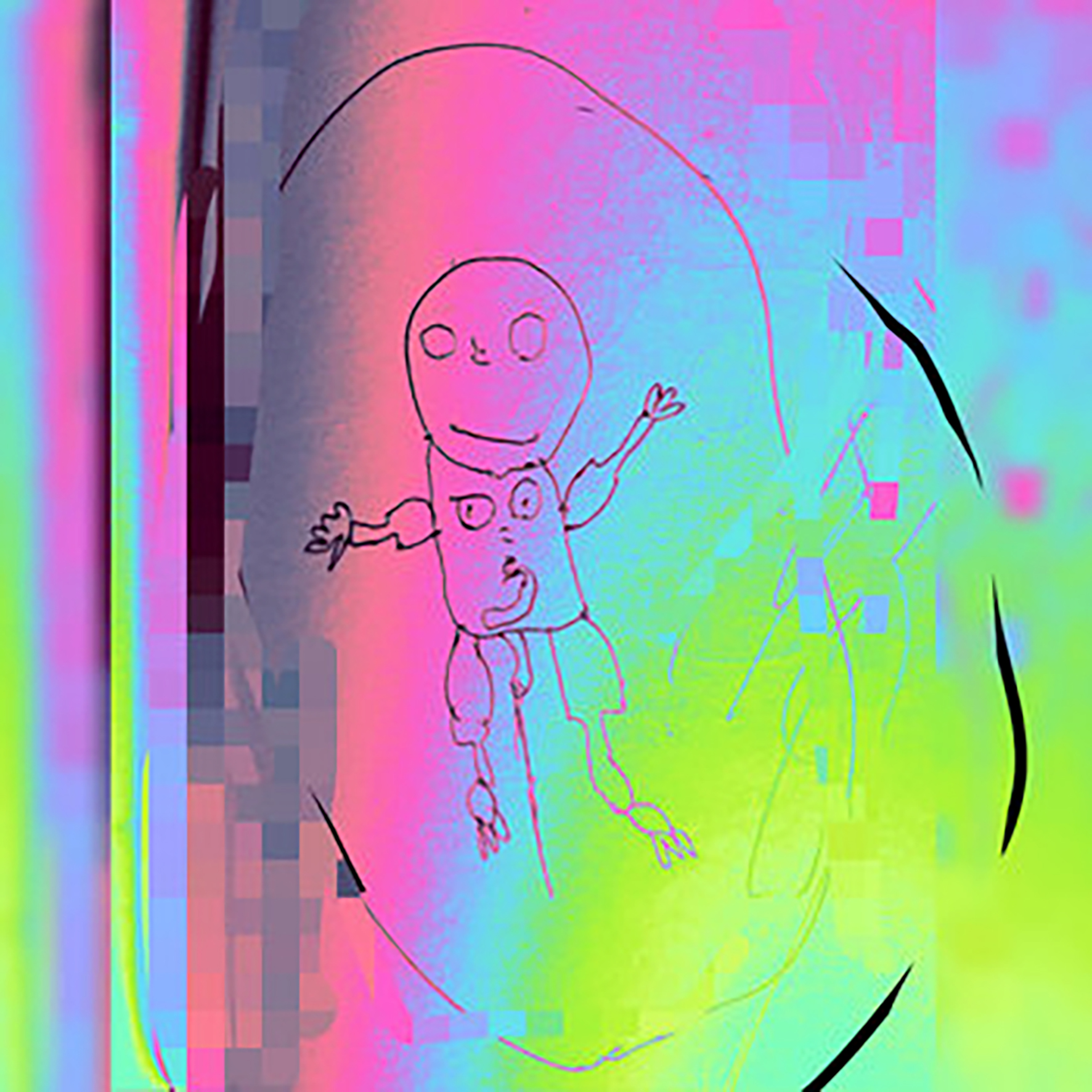 I was not familiar with this Norwegian artist until a few weeks ago, but I find that just about everything on Ireland's wonderfully weird and adventurous Fort Evil Fruit is worth hearing. That seems to be doubly true when an album also features amusingly Cronenbergian child art and a droll Coil reference. Unsurprisingly, Cronenberg and Coil are among Br√∏rby's many influences for this album, but they thankfully do not surface in derivative or unimaginative ways. Instead, Constant Shallowness Leads to Body Horror is an unexpectedly amiable "love letter to taste-defining early influences" presented as a flickering fever dream of Br√∏rby's fond childhood memories of grainy VHS films, surreal late night television commercials, videogames with friends, and the thrill of discovering underground music's weird and shadowy fringes. All of that predictably sounds great to me, but what makes this album even better is that Br√∏rby proves remarkably adept at filtering all of that into a focused, distinctive, and oft-beautiful vision. In its own bizarre way, Constant Shallowness is an outsider pop album, as the heart of these pieces is Br√∏rby's strong melodic sensibility and a real knack for cool percussion. That alone would be enough to make this a strong release, but Br√∏rby went one step further and enveloped his warm, ramshackle, and endearingly lovely pop vignettes in a stammering, obsessive, and phantasmagoric swirl of vividly multidimensional mindfuckery. He is exceptionally good at that last bit, making this one hell of a immersive album.
I was not familiar with this Norwegian artist until a few weeks ago, but I find that just about everything on Ireland's wonderfully weird and adventurous Fort Evil Fruit is worth hearing. That seems to be doubly true when an album also features amusingly Cronenbergian child art and a droll Coil reference. Unsurprisingly, Cronenberg and Coil are among Brørby's many influences for this album, but they thankfully do not surface in derivative or unimaginative ways. Instead, Constant Shallowness Leads to Body Horror is an unexpectedly amiable "love letter to taste-defining early influences" presented as a flickering fever dream of Brørby's fond childhood memories of grainy VHS films, surreal late night television commercials, videogames with friends, and the thrill of discovering underground music's weird and shadowy fringes. All of that predictably sounds great to me, but what makes this album even better is that Brørby proves remarkably adept at filtering all of that into a focused, distinctive, and oft-beautiful vision. In its own bizarre way, Constant Shallowness is an outsider pop album, as the heart of these pieces is Brørby's strong melodic sensibility and a real knack for cool percussion. That alone would be enough to make this a strong release, but Brørby went one step further and enveloped his warm, ramshackle, and endearingly lovely pop vignettes in a stammering, obsessive, and phantasmagoric swirl of vividly multidimensional mindfuckery. He is exceptionally good at that last bit, making this one hell of a immersive album. Sarah Lipstate's latest opus enigmatically borrows its title from a disorder in which those afflicted lose the ability to create mental imagery and associations (it literally translates as "without imagination"). If there is a polar opposite of that disorder, there is a strong probability that Lipstate has it, as Aphantasia is an absolute tour de force of imaginative, vividly realized visions. In fact, there are twenty-two such self-contained visions on the album and very few of them stretch beyond a minute or two in length. That can be a bit exasperating at times, as the most wonderful ideas are often some of the most ephemeral, but the sheer volume of killer motifs on display could have been the framework for four albums of great fully formed songs rather than one dazzling array of brief vignettes. That unusual album structure was entirely by design, of course, as Lipstate viewed each song as a "a short sharp flash," further noting that "if her usual process brought about cinematic results, these were something new – something swift and intriguing." The "something new" is that the album is intended as something akin to a poetry collection, and it succeeds admirably in that light while still remaining extremely damn cinematic regardless. The fragmentary nature of this album will likely garner a somewhat polarized response from fans, but I doubt that anyone will question whether Lipstate is at the height of her creative powers right now.
Sarah Lipstate's latest opus enigmatically borrows its title from a disorder in which those afflicted lose the ability to create mental imagery and associations (it literally translates as "without imagination"). If there is a polar opposite of that disorder, there is a strong probability that Lipstate has it, as Aphantasia is an absolute tour de force of imaginative, vividly realized visions. In fact, there are twenty-two such self-contained visions on the album and very few of them stretch beyond a minute or two in length. That can be a bit exasperating at times, as the most wonderful ideas are often some of the most ephemeral, but the sheer volume of killer motifs on display could have been the framework for four albums of great fully formed songs rather than one dazzling array of brief vignettes. That unusual album structure was entirely by design, of course, as Lipstate viewed each song as a "a short sharp flash," further noting that "if her usual process brought about cinematic results, these were something new – something swift and intriguing." The "something new" is that the album is intended as something akin to a poetry collection, and it succeeds admirably in that light while still remaining extremely damn cinematic regardless. The fragmentary nature of this album will likely garner a somewhat polarized response from fans, but I doubt that anyone will question whether Lipstate is at the height of her creative powers right now. Room40 continues its campaign to celebrate this Argentinian composer's underheard body of work with a second volume of selected pieces very different from the voice- and field recording-centric fare of last year's Echos+. That said, Canto+ does share its predecessor's curatorial aesthetic of combining pieces from her more prolific ‘70s heyday with more recent work and the differing eras sit quite comfortably together. To some degree, Canto+ feels like a very synth-driven album, as there are plenty of modular synth sounds and textures fluttering and chirping around, but nailing down an overarching vision that unites these pieces is surprisingly elusive, as every piece is full of unexpected and surreal detours into unfamiliar terrain. In fact, that elusiveness is arguably what most defines Ferreyra's work the most here, as a major recurring theme of Canto+ is the organically fluid and oft-surprising way in which these pieces evolve: they never linger very long in familiar melodic or structural territory, yet they always wind up getting somewhere unique and compelling. Of the two Room40 collections, I still prefer Echos+ as a whole, but a piece like "Canto del loco (Mad Man's Song)" would probably be a highlight on just about any release (Ferreyra-related or otherwise). Ferreyra's vision can admittedly be challenging at times, but the rewards make it a journey well worth taking.
Room40 continues its campaign to celebrate this Argentinian composer's underheard body of work with a second volume of selected pieces very different from the voice- and field recording-centric fare of last year's Echos+. That said, Canto+ does share its predecessor's curatorial aesthetic of combining pieces from her more prolific ‘70s heyday with more recent work and the differing eras sit quite comfortably together. To some degree, Canto+ feels like a very synth-driven album, as there are plenty of modular synth sounds and textures fluttering and chirping around, but nailing down an overarching vision that unites these pieces is surprisingly elusive, as every piece is full of unexpected and surreal detours into unfamiliar terrain. In fact, that elusiveness is arguably what most defines Ferreyra's work the most here, as a major recurring theme of Canto+ is the organically fluid and oft-surprising way in which these pieces evolve: they never linger very long in familiar melodic or structural territory, yet they always wind up getting somewhere unique and compelling. Of the two Room40 collections, I still prefer Echos+ as a whole, but a piece like "Canto del loco (Mad Man's Song)" would probably be a highlight on just about any release (Ferreyra-related or otherwise). Ferreyra's vision can admittedly be challenging at times, but the rewards make it a journey well worth taking.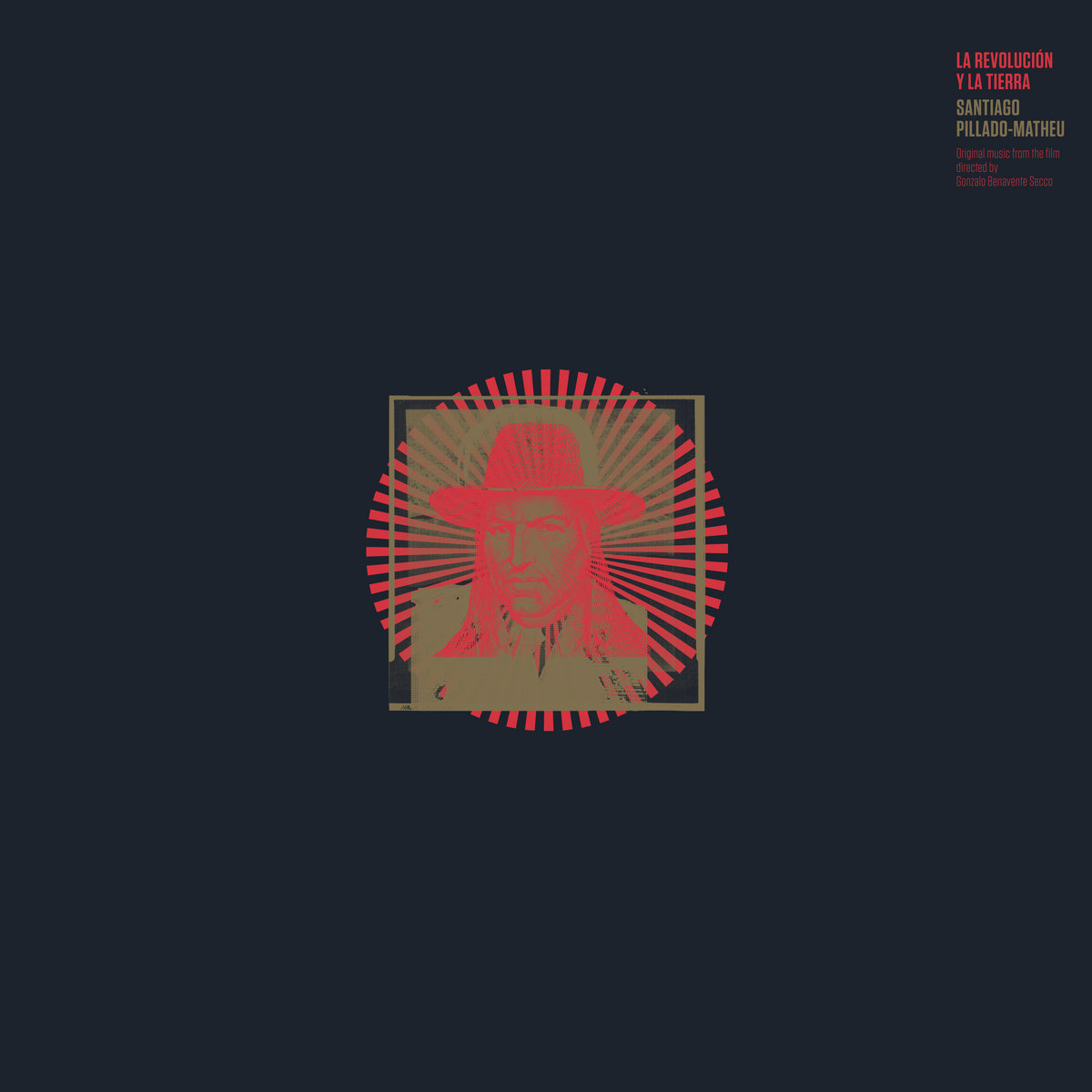 In Peru, Gonzalo Benavente Secco’s controversial documentary La revolución y la tierra, has drawn huge cinema audiences, perhaps because its subject, the 1969 Land Reform Act, still bitterly divides opinion more than fifty years later. So much so that TV Peru bowed to pressure and refused to broadcast the film, which skillfully folds scenes from old Pervuian films into the mix, in the run up to the elections of 2021. Santiago Pilado-Matheu’s deceptively simple soundtrack uses ambient electronics, loops, dubby Afro-Latin rhythms, Andean drone and melody, film dialogue, and speech excerpts by peasant leaders, to create a comforting yet sinister landscape of memory.
In Peru, Gonzalo Benavente Secco’s controversial documentary La revolución y la tierra, has drawn huge cinema audiences, perhaps because its subject, the 1969 Land Reform Act, still bitterly divides opinion more than fifty years later. So much so that TV Peru bowed to pressure and refused to broadcast the film, which skillfully folds scenes from old Pervuian films into the mix, in the run up to the elections of 2021. Santiago Pilado-Matheu’s deceptively simple soundtrack uses ambient electronics, loops, dubby Afro-Latin rhythms, Andean drone and melody, film dialogue, and speech excerpts by peasant leaders, to create a comforting yet sinister landscape of memory. Newly remastered by Rashad Becker and given a vinyl reissue, Relentless Trills first surfaced on cassette as part of Boomkat's eclectic Documenting Sound series devoted to home recordings made during the pandemic. Given those origins, it makes sense that this full-length debut showcases a very different side of DJ Plead's artistry than his impressive run of oft-killer EPs. Given that, curious listeners intrigued by the Australian producer's unique blend of cutting edge UK dance subgenres with Middle Eastern influences like dabke and mahraganat should probably head to 2020's Going For It EP first to experience the "out-of-control Lebanese wedding party" brilliance of prime DJ Plead before exploring this inspired detour. That said, this surprisingly experimental, stripped-down, and post-punk-adjacent departure from his strengths is quite a compelling listen in its own right. Boomkat's description rightly tosses around adjectives like "humid" and "sensual" to describe this bedroom DIY fantasia of floating Middle Eastern melodies and languorously simmering grooves, but that does not paint the entire picture, as Relentless Trills also masterfully dips its toes in hazy psychedelia, plunderphonics, and a hauntingly beautiful beatless synth piece. The latter ("RT6") unexpectedly steals the show, as DJ Plead (Jarred Beeler) has a remarkably great ear for melody and atmosphere, yet this entire release is quite a singular, propulsive, and (of course) sensually humid experience from start to finish.
Newly remastered by Rashad Becker and given a vinyl reissue, Relentless Trills first surfaced on cassette as part of Boomkat's eclectic Documenting Sound series devoted to home recordings made during the pandemic. Given those origins, it makes sense that this full-length debut showcases a very different side of DJ Plead's artistry than his impressive run of oft-killer EPs. Given that, curious listeners intrigued by the Australian producer's unique blend of cutting edge UK dance subgenres with Middle Eastern influences like dabke and mahraganat should probably head to 2020's Going For It EP first to experience the "out-of-control Lebanese wedding party" brilliance of prime DJ Plead before exploring this inspired detour. That said, this surprisingly experimental, stripped-down, and post-punk-adjacent departure from his strengths is quite a compelling listen in its own right. Boomkat's description rightly tosses around adjectives like "humid" and "sensual" to describe this bedroom DIY fantasia of floating Middle Eastern melodies and languorously simmering grooves, but that does not paint the entire picture, as Relentless Trills also masterfully dips its toes in hazy psychedelia, plunderphonics, and a hauntingly beautiful beatless synth piece. The latter ("RT6") unexpectedly steals the show, as DJ Plead (Jarred Beeler) has a remarkably great ear for melody and atmosphere, yet this entire release is quite a singular, propulsive, and (of course) sensually humid experience from start to finish. Since the invention of cassette tapes, every country has had its own independent tape scene—whether independent musicians with limited release output via the medium or distributors sharing music under harsh conditions. Spain is particularly distinct in this time since, following the death of dictator Francisco Franco the prior decade, the country's creative class was reawakened and allowed to flourish. This tasty compilation from Swiss label Bongo Joe harnesses this movement, focusing on an array of Spanish and Spanish-related electronic music released between 1983 and 1990 that bleeds exoticism rooted in ambient investigations. The compilation succeeds at painting a picture of a lesser-known world of Balearic mysticism with Ibiza-influenced beats and treatments.
Since the invention of cassette tapes, every country has had its own independent tape scene—whether independent musicians with limited release output via the medium or distributors sharing music under harsh conditions. Spain is particularly distinct in this time since, following the death of dictator Francisco Franco the prior decade, the country's creative class was reawakened and allowed to flourish. This tasty compilation from Swiss label Bongo Joe harnesses this movement, focusing on an array of Spanish and Spanish-related electronic music released between 1983 and 1990 that bleeds exoticism rooted in ambient investigations. The compilation succeeds at painting a picture of a lesser-known world of Balearic mysticism with Ibiza-influenced beats and treatments.
